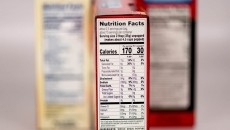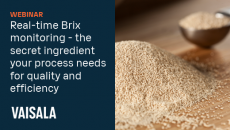US doctors take a stand against salt
clamor against salt, voting this week to urge the government to
revoke the substance's GRAS status.
The move marks the next step in a mounting campaign to reduce the salt content in food, a battle that has so far remained voluntary.
But as awareness of the health risks associated with the substance increases, and a growing number of food firms choose to slash salt from their products in an effort to promote them as 'healthy', sodium may well be on the road to becoming the next trans fat in the nation's consciousness.
Excess sodium has been shown to increase the chance of developing hypertension, heart disease, and stroke. And according to the AMA, most Americans consume two to three times the amount of sodium that is healthy, with an estimated 75 to 80 percent of the daily intake of sodium coming from processed and restaurant foods.
"Just one cup of canned soup can contain more than 50 percent of the FDA recommended daily allowance," said AMA board member and practicing cardiologist Dr James Rohack.
The AMA currently recommends limiting salt intake to 2,300mg per day. And according to the US regulatory agency Food And Drug Administration (FDA), foods that can be considered 'healthy' must contain less than 480mg sodium per serving.
The nation's doctors are now urging the FDA to revoke the 'generally recognized as safe' (GRAS) status of salt and to develop regulatory measures to limit sodium in processed and restaurant foods.
They are also calling for a minimum 50 percent reduction in the amount of sodium in processed foods, fast food products and restaurant meals to be achieved over the next decade.
"Cardiovascular disease remains the number one killer of Americans. People who reduce dietary sodium intake are taking an important step in preventing future health problems," said Dr Rohack.
The AMA also plans to discuss with the FDA ways to improve labeling to assist consumers in understanding the amount of sodium contained in processed food products and to develop label markings and warnings for foods high in sodium.
Other recommended measures include working with appropriate partners to educate consumers about the benefits of long-term, moderate reductions in sodium intake, said the association.
The recent AMA vote comes around a year after the FDA was petitioned by consumer advocacy group Center for Science in the Public Interest (CSPI) to treat salt as a food additive for the purposes of regulation, with strict limits placed on the salt content of processed foods.
According to the CSPI, the FDA's position on salt level regulations over the past 25 years has been characterised by "false starts and foot-dragging."
Indeed, the latest petition by the CSPI is nothing new. The group had first petitioned the FDA to reclassify salt from GRAS to food additive status in 1978. In 1982, the FDA deferred action on the GRAS status, instead amending its labeling regulations to encourage the voluntary labelling of sodium content, in the hope that this would reduce levels of salt in processed food.
"The agency wishes to emphasize that if there is no substantial reduction in the sodium content of processed foods and if the information on sodium labeling is not adopted after a reasonable time period, FDA will consider additional regulatory options, including proposing a change in salt's GRAS status," the FDA had said in 1982.
Indeed, regulations did not stipulate that salt had to be listed on food labels until 1994, when the FDA implemented the Nutrition Labeling and Education Act.
In September last year, the FDA published a final rule on how much sodium can be in a food that carries a 'healthy' claim on its label, limiting this to 480 mg per serving for individual foods and 600 mg per serving for meals and dishes.
But developing salt substitutes that actually taste good has been a significant obstacle for the food industry. Receptors inside the human tongue require the shape and size of the sodium ion in order to register a salty taste.
The bottom line for manufacturers is that taste remains a dominant concern in determining consumer preference, and poor salt imitations have led to a number of discontinued product lines. It seems that while consumer awareness of excessive salt consumption has never been higher, American palates still demand salt.













